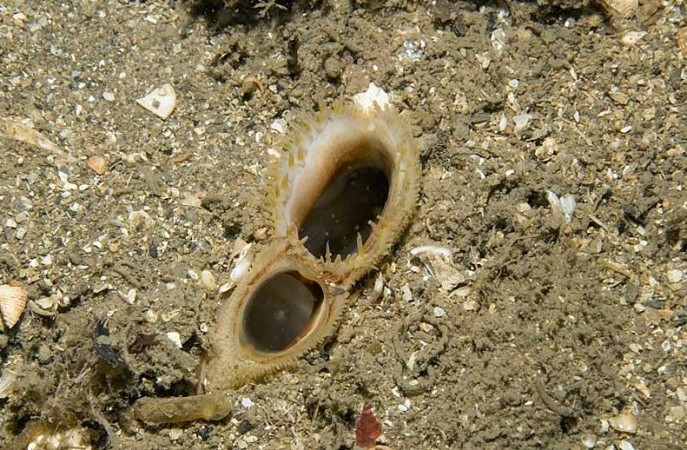
The vast depths of the North Atlantic Ocean hold many hidden wonders, one of which is the remarkable ocean quahog, a type of clam that has claimed the title of the world's oldest known living animal. This unassuming creature, with its unassuming appearance, has fascinated scientists and marine enthusiasts alike. In this article, we will dive into the world of the ocean quahog and explore its extraordinary longevity, shedding light on the factors that contribute to its extended lifespan.
The Discovery of the Ocean Quahog
The ocean quahog (Arctica islandica) first came into the scientific spotlight during the 1980s. Researchers stumbled upon this ancient creature while studying the seabed off the coast of Iceland. What initially seemed like an ordinary clam turned out to be an astonishing revelation. The discovery sparked curiosity and prompted further investigation into this uncharted territory.
Characteristics of the Ocean Quahog
Size and Appearance
The ocean quahog is not an imposing creature by any means. It typically measures around 2 to 3 inches in length and has a dark, dome-shaped shell. Its unassuming appearance belies the secrets hidden within its structure.
Habitat and Distribution
These clams reside in the North Atlantic Ocean, where they prefer deep waters and soft muddy or sandy seabeds. They are found in various regions, from the coasts of Canada and the United States to parts of Europe.
Remarkable Longevity
What sets the ocean quahog apart from other marine animals is its extraordinary lifespan. While most clams and other bivalves have relatively short life spans, the ocean quahog can live for over 500 years! Unlocking the secrets behind this longevity has been the focus of extensive research.
Factors Contributing to Longevity
Slow Growth Rate
One key factor contributing to the ocean quahog's incredible lifespan is its slow growth rate. Unlike many species that rapidly reach maturity, these clams take decades to grow to full size. Their slow pace of development allows them to conserve energy and invest in longevity.
Low Metabolic Rate
The ocean quahog's metabolism operates at an exceptionally low rate. This means that the clam's body processes nutrients and expends energy at a sluggish pace. A reduced metabolic rate is associated with prolonged life spans in various organisms, and the ocean quahog is no exception.
Environmental Factors
The environment in which the ocean quahog resides also plays a crucial role in its longevity. The deep, cold waters of the North Atlantic provide a stable and consistent habitat, with fewer environmental stressors compared to shallower, warmer waters.
Studying the Ocean Quahog's Age
Determining the age of a creature that can live for centuries is no easy task. Scientists have employed several techniques to study the ocean quahog's age and gain insights into its life history.
Incremental Growth Rings
Similar to the growth rings found in trees, ocean quahogs possess annual rings in their shells. By carefully examining these rings, scientists can estimate the age of an individual clam.
Radiocarbon Dating
Radiocarbon dating has also been used to determine the age of ocean quahogs. By analyzing the carbon isotopes in the clam's shell, researchers can estimate when it was born and, consequently, its age.
Longevity Research
The study of the ocean quahog's longevity extends beyond mere curiosity. Understanding the factors that contribute to its extended life span can provide valuable insights into the biology of aging and potentially have implications for human health.
Comparison with Other Long-Lived Species
While the ocean quahog holds the record for the oldest living animal, other species also boast impressive lifespans.
Greenland Shark
The Greenland shark is one such creature known for its longevity. Some individuals have been estimated to be over 400 years old, making them among the longest-lived vertebrates on Earth.
Bowhead Whale
The bowhead whale, a majestic creature of the Arctic, is another example of a long-lived species. These whales have been known to live for well over 200 years.
Aldabra Giant Tortoise
On land, the Aldabra giant tortoise stands out as an exceptional long-lived species. These tortoises have been documented to live for more than 150 years.
Importance of Longevity Studies
Understanding Aging
Studying the longevity of species like the ocean quahog can provide valuable data on the aging process. This research can potentially lead to insights into extending human lifespan and improving overall health in the elderly.
Environmental Changes
Longevity studies are also vital for understanding the impact of environmental changes on various species. As the Earth undergoes transformations due to human activities, knowing how these changes affect long-lived animals becomes crucial for conservation efforts.
Conservation Efforts
The information gathered from longevity studies can directly contribute to conservation efforts. By understanding the factors that support long lifespans, scientists can devise strategies to protect these unique and vulnerable creatures.
Fascination with Long-Lived Creatures
Cultural Significance
Throughout history, long-lived creatures have captured the imagination of cultures worldwide. Stories of mythical creatures with eternal life have been a common theme in folklore and mythology.
Scientific Interest
From a scientific perspective, the study of long-lived animals opens new avenues of research and challenges existing theories about the limitations of life span.
The ocean quahog, a seemingly ordinary clam, has revealed extraordinary secrets about longevity. Its ability to live for over 500 years has fascinated scientists and sparked curiosity about the mysteries of aging and life itself. By studying the factors contributing to the ocean quahog's extended life, we gain valuable knowledge that can improve our understanding of aging, environmental changes, and conservation efforts.
Kargil Diwas: Shivraj Chouhan Pays Homage to Martyrs at Shaurya Smarak in Bhopal
2 Arrested for Sextortion Call to Union Minister Prahlad Patel